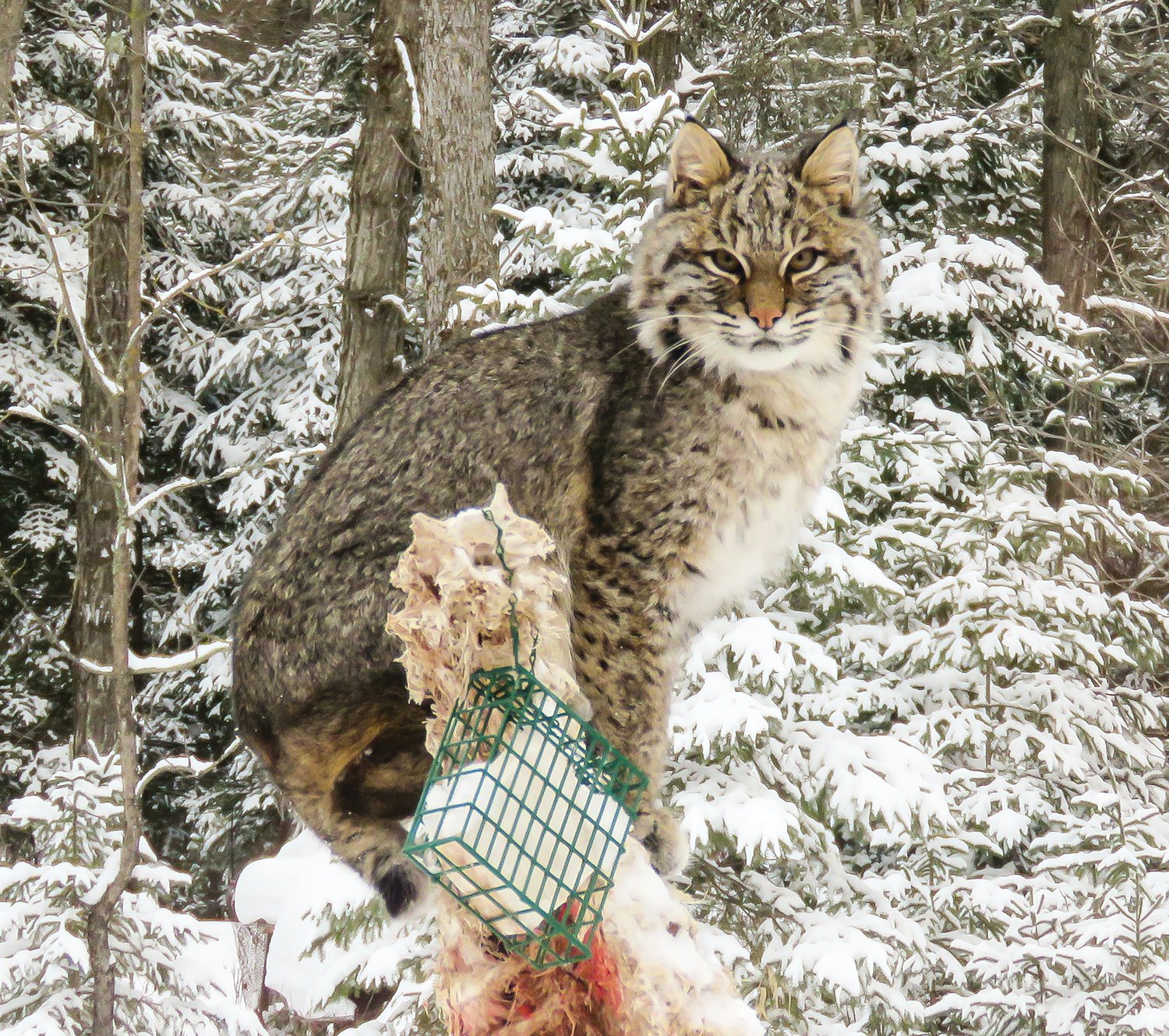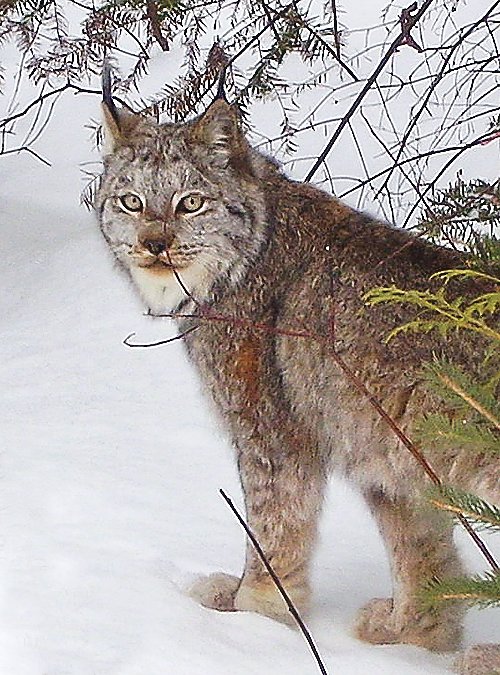Support the Timberjay by making a donation.
Watching for wild cats
Distinguishing a bobcat from a lynx isn’t that tough when you focus on the field marks
REGIONAL— Last year, I wrote about a bobcat that had taken up temporary residence in an old doghouse in Randy and Julie Grahn’s backyard near Cook during a February cold snap. They feed …
This item is available in full to subscribers.
Attention subscribers
To continue reading, you will need to either log in to your subscriber account, or purchase a new subscription.
If you are a current print subscriber, you can set up a free website account and connect your subscription to it by clicking here.
If you are a digital subscriber with an active, online-only subscription then you already have an account here. Just reset your password if you've not yet logged in to your account on this new site.
Otherwise, click here to view your options for subscribing.
Please log in to continue |
Watching for wild cats
Distinguishing a bobcat from a lynx isn’t that tough when you focus on the field marks
REGIONAL— Last year, I wrote about a bobcat that had taken up temporary residence in an old doghouse in Randy and Julie Grahn’s backyard near Cook during a February cold snap. They feed lots of birds there and, depending on what’s on offer at the Grahn residence, other critters show up to take advantage of the largesse.
This time, it was a propped-up deer carcass that attracted what appeared to be an entire family of bobcats earlier this winter. The cats showed up at various times and in varying numbers, and at times they had as many as four bobcats, most likely a female with her juvenile kits still tagging along.
While bobcats (Lynx rufus) are found throughout the North Country, their population thins out as you move north and east in Minnesota. For many years, they were virtually unknown in our region, as they weren’t as well adapted to long, cold winters and deep snow as their cousins the Canada lynx (Lynx canadensis). But climate change and other human-caused alterations to the environment in northeastern Minnesota have allowed this species to spread into the region.
The bulk of Minnesota’s bobcat population has long been centered in central and north-central Minnesota, although they have certainly increased in numbers in northeastern Minnesota in recent years. As might be expected, we still hear of significantly more bobcat sightings in the Cook area and points west, (closer to the state’s core bobcat range) than we do in the eastern portions of our coverage area. While bobcats are certainly present in the Tower and Ely area, you’re increasingly likely to run into Canada lynx as you move east in our region.
It’s pretty easy to confuse these two species, especially if you only get a quick glimpse. But there are a few hallmarks to keep in mind if you happen to spot one of these wild cats that can help you quickly distinguish them. The bobcat, which is also called a red lynx in some areas, does have a somewhat warmer color palette than the Canada lynx, with a reddish tint to its fur, in contrast to the almost ghostly tan or gray of the Canada lynx. The bobcat also tends to exhibit more spots and striping than a lynx.
While both species have a bobbed tail and a black tip, a bobcat’s tail tends to have black striping as well, while a lynx’s tail is mostly a mottled tan or light gray, with a distinct black tip which often appears as if it’s dipped in ink.
The Canada lynx also walks with its rear somewhat elevated, a characteristic resulting from its significantly longer back legs. The lynx has longer legs all around than the bobcat, which are undoubtedly an advantage in deep snow. The lynx also has very large and prominent feet, another clear advantage for capturing its primary prey, snowshoe hares, in deep snow.
While both species do have tufted ears, the tuft on a lynx is much more prominent (typically extending about two inches) than on a bobcat. You’re likely to see the ear tufting if you get a decent look at a lynx, but you’d have to be up close to spot the much-less-pronounced ear tufting on a bobcat. Lynx also have a fairly prominent, whitish “beard” that extends down below their chin, often framed with a narrow black line. While that characteristic is often overlooked in most descriptions, I think it’s a very noticeable distinction between the two species.
While some DNR biologists once claimed that lynx did not reproduce in Minnesota—but only appeared as occasional wanderers from Canada— that has been disproven by longstanding research from the U.S. Forest Service. Since 2001, the Forest Service has obtained more than 1,700 DNA samples from lynx in northeastern Minnesota, with reproduction documented every year since 2001. Which means we now know that Canada lynx are not mere wanderers into the state but maintain a longstanding and reproducing population of at least hundreds of individuals in our region. So, keep your eyes open. Either one of these two similar wild cats could be peering out, at any time, from the woods near you.









